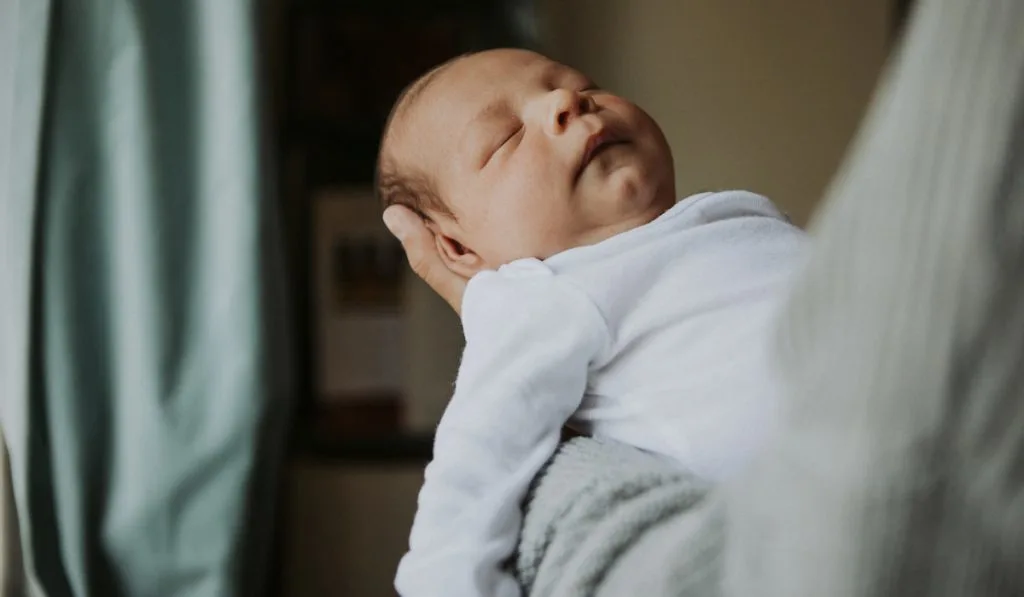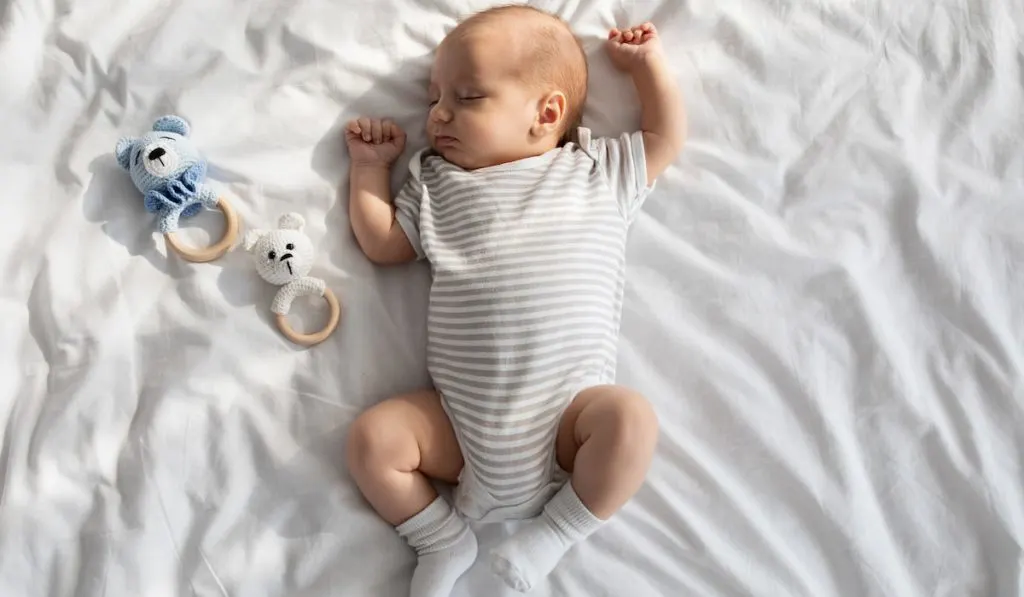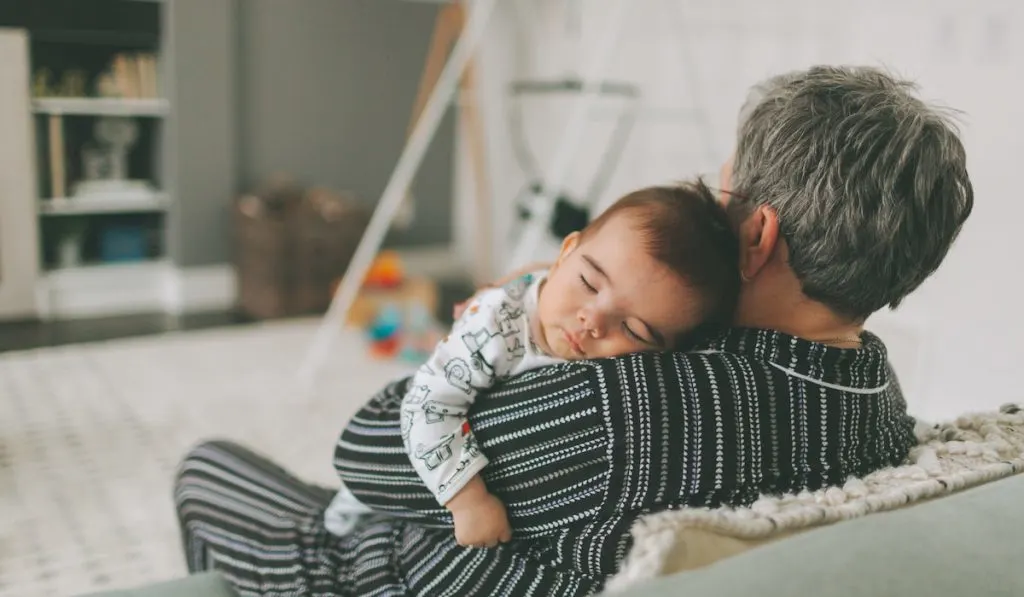If your baby has trouble sleeping through the night, understanding how their sleep cycles work might help. We know you want your baby to be as healthy as possible and that means they need a solid night’s sleep.
The sleep cycle is a period of sleep that begins with light sleep and ends with deep sleep and typically lasts 60 to 90 minutes. Babies typically go through the stages of sleep during their sleep cycles without stirring or waking up.

When Do Babies Learn to Connect Sleep Cycles for Naps?
There are three categories of sleep cycles for babies depending on their age. These sleep cycles are connected to the baby’s circadian rhythm and can vary from child to child.
Generally, though, they will go through changes in their sleep habits and stages around the same age and you can recognize why your baby may be having trouble sleeping at certain times of their growth and age.
Baby sleep cycles
3-5 Months: A sleep cycle lasts 60-75 minutes. Babies can sleep through the night without waking up if they sleep for more extended periods.
5-6 Months: Sleep cycles last 90 minutes or more, though there is still a high chance that your baby will wake up as he moves between sleep stages during his sleep cycles.
6-9 Months: Your baby will sleep through the night with less than 15 minutes of stirring during sleep cycles.
Sleep Cycles and Naps
As your baby grows and begins to connect their sleep cycle to nap time, you will notice that they begin to sleep for a longer amount of time without stirring. This is because they have learned to sleep through the transition from stage to stage within their sleep cycle.
If your baby wakes up and cries when you put him down for a nap, this might disturb the start of his sleep cycle and cause him to be unable to sleep. If a sleep cycle is interrupted, it may cause the baby to be stuck in a sleep stage instead of experiencing a sleep cycle.
For your baby to connect their sleep cycle to their nap, it is best that they are put down for their nap either without waking them or while they are nearly asleep and not disturbed before they are able to fall asleep completely. If they are awoken during this time, they will stay in a sleep stage instead of going into a sleep cycle.
It takes time for babies to learn to connect sleep cycles with naps but it is something that should eventually come naturally for them.
Sleep Cycles vs. Sleep Stages

Sleep cycles and sleep stages are two completely different things. During one sleep cycle, a baby undergoes 4 stages: wake, light sleep, deep restful sleep, and rapid eye movement (REM), and the process is repeated 5 to six times during the night.
There are some important things to know about a baby’s sleep cycles and sleep stages:
- Different sleep cycles: Sleep cycles last for different times at various ages.
- Sleep cycles may need to be connected: The sleep cycles that do not form naturally because the baby can’t stay asleep long enough or cries out as he tries to sleep should be encouraged by offering sleep at appropriate sleep stages.
- How sleep cycles are connected: Babies experience sleep cycles when sleep is not interrupted before sleep begins. Otherwise, they wake up out of sleep to have a sleep stage instead of going back into another sleep cycle.
- Sleep starts again during sleep cycles: With sleep cycles, sleep starts again after a sleep stage. The sleep cycle begins with wakefulness, then light sleep and moves into a deep sleep and finally rapid eye movement (REM) After all this, the baby returns to wakefulness near the end of sleep.
- Sleep stages are different from sleep cycles: Sleep stages occur when sleep is interrupted instead of continuously occurring. There’s no way to tell what kind of sleep stage your baby is in during sleep cycles.
- Sleep helps your baby develop: Sleep is an essential part of development, but sleep has other functions as well. Babies need to sleep long enough to connect sleep cycles and wakefulness. Connecting sleep cycles can help your baby sleep through the night more quickly.

How to Help Babies Connect Sleep Cycles During a Nap
Health conditions, hunger, teething, sleeping environment, and learning to resettle are some of the common reasons why a child wakes up during the day.
Nap times are split into morning naps, lunchtime naps, and afternoon naps. Babies learn how to connect sleep on their own when they’re allowed to move into deeper levels of sleep without being woken up.
One study found that babies cry for an average of ten minutes before falling asleep into the first sleep stage
You can help your baby to connect their sleep cycle by ‘shushing’ them, gently patting them, rocking, and making sure they are at their comfort peak.
If your baby likes getting bum pats or back rubs, doing that will help them connect sleep cycles.

How Do You Teach Your Baby to Connect Sleep Cycles?
Teaching babies how to link sleep cycles is difficult but a very possible sleep issue to handle. Teaching your baby how to connect sleep cycles should start at around 6 months when the baby is mature enough to put the sleep cycle together.
Babies learn to connect sleep cycles by being in bed and not being woken up before or during a sleep stage. The sleep cycle is repeated five to six times during the day.
To learn how to tell if your baby is in a sleep cycle, observe them closely during a nap, observe how your baby moves and breathes when they are in their deepest sleep. Pay attention to how much time has passed and you should be able to know how long it takes your child to achieve a sleep cycle.
Avoid resettling the baby until an hour has gone by from the moment he or she falls asleep.
When your baby is in sleep stages: There’s no way to tell what kind of sleep stage your baby is in, but there are some signs you can look for. Your baby may move less, yawn, or rub their eyes throughout the day and night.
Final Thoughts
All babies are not the same when it comes to sleep habits and their own individual adherence to sleep cycles. You will have to learn to know your own baby and what works for them to get them the best sleep for their health.
Remember that sleep is not only important for your baby, but also for you. You need to stay healthy so you can keep your bundle of joy healthy.
